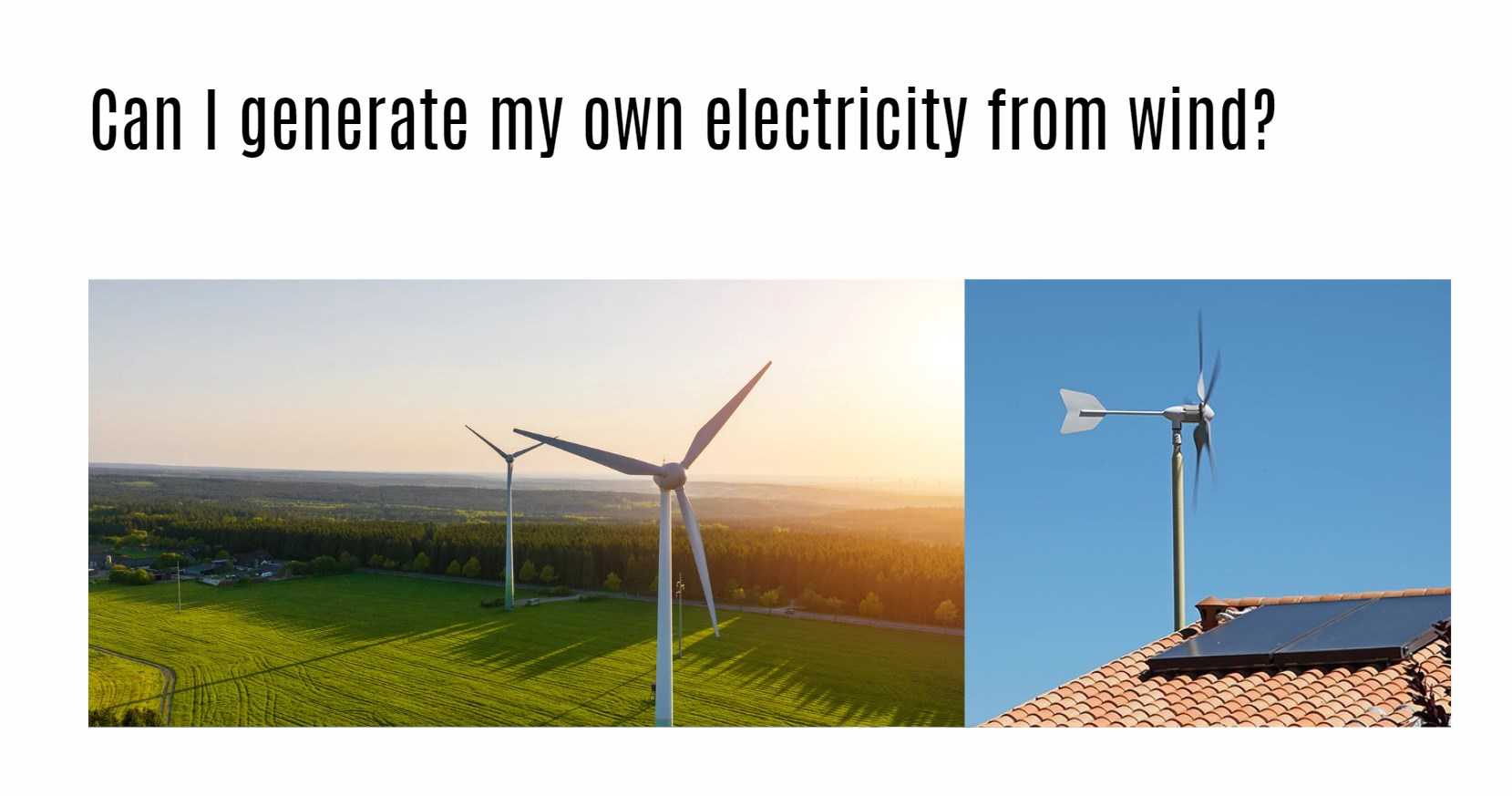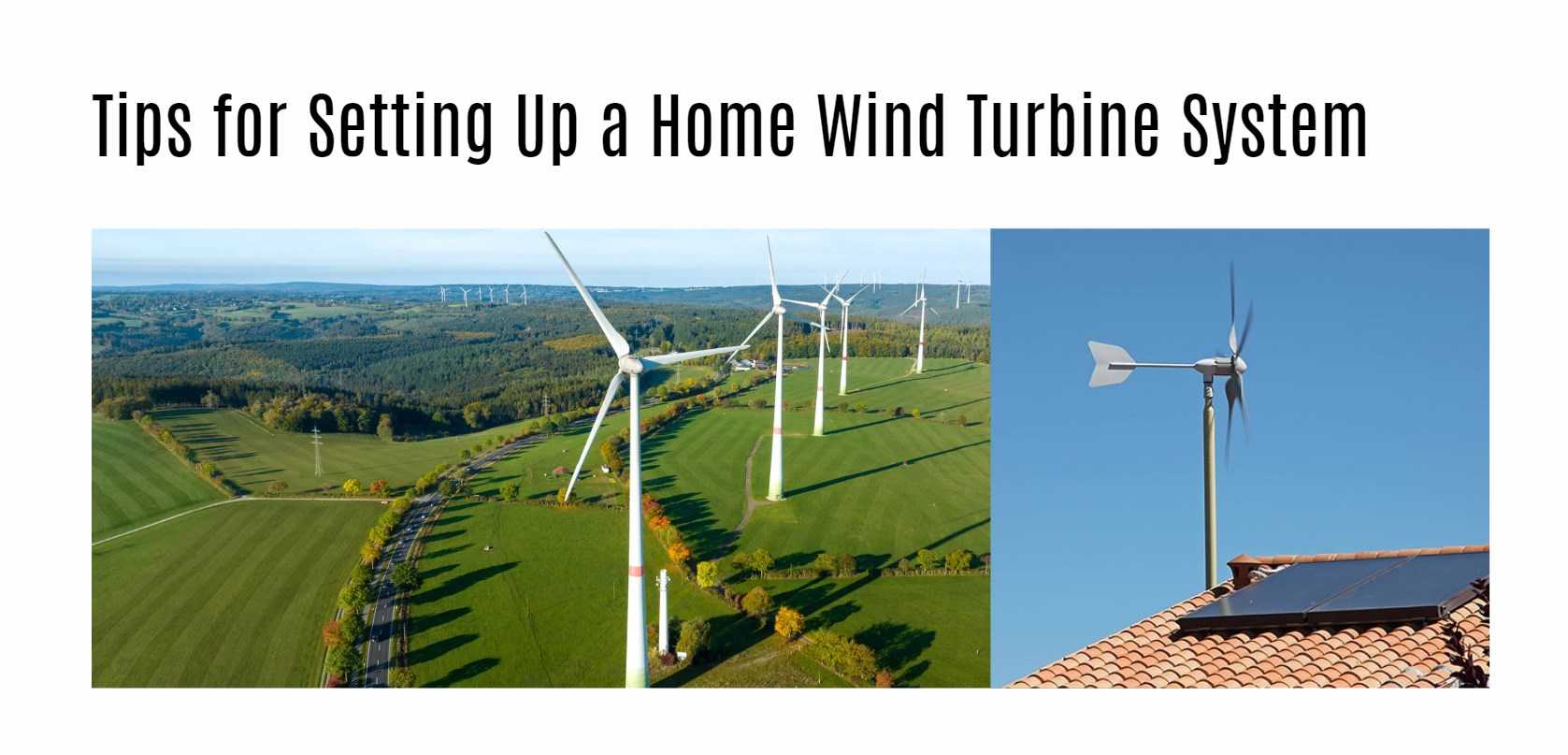Have you ever looked out at a windy day and wondered if all that gust could be harnessed to power your home? Well, the answer is yes! Wind energy is a clean, renewable resource that can be utilized to generate electricity right in your own backyard. In this blog post, we will explore the ins and outs of generating your own electricity from wind, from how it works to the cost-saving benefits and government incentives available. So sit back, relax, and let’s dive into the world of wind energy together!
How Wind Energy Works
Have you ever wondered how wind energy actually works to generate electricity? Let’s break it down.
When the wind blows, it causes the blades of a turbine to spin. These turbines are connected to a generator that converts the mechanical energy from the spinning blades into electrical energy.
The kinetic energy of the moving air is transferred through the rotor shaft and gearbox, which increases the rotational speed and generates power. The generated electricity then flows through cables to your home or gets stored in batteries for later use.
Wind turbines work most efficiently in areas with consistent and strong winds. The size and design of the turbine blades play a crucial role in capturing as much wind energy as possible.
Understanding how wind energy works can help you appreciate its potential as a sustainable source of power for your home.
Harnessing Wind Energy at Home
Harnessing wind energy at home has become a popular choice for those looking to reduce their carbon footprint and save on electricity bills. By installing a small wind turbine on your property, you can generate clean and renewable energy right at your doorstep.
The process of harnessing wind energy is relatively simple – the kinetic energy from the wind turns the blades of the turbine, which then converts it into electricity through a generator. This electricity can be used to power your home or stored in batteries for later use.
When considering setting up a home wind turbine system, it’s important to take into account factors such as local zoning regulations, average wind speeds in your area, and available space for installation. Additionally, regular maintenance is key to ensuring optimal performance and longevity of your system.
While there are upfront costs associated with purchasing and installing a home wind turbine system, many homeowners find that they can recoup these expenses over time through savings on their utility bills. Plus, with government incentives available for renewable energy projects, going green has never been more affordable.
Pros and Cons of Generating Your Own Electricity from Wind
When it comes to generating your own electricity from wind, there are several pros and cons to consider.
On the positive side, wind energy is a clean and renewable source of power that can help reduce your carbon footprint. By harnessing the power of the wind, you can potentially save money on your electricity bills in the long run. Additionally, installing a home wind turbine system can increase your energy independence and provide backup power during outages.
However, there are also some drawbacks to be aware of. One potential downside is the initial cost of purchasing and installing a wind turbine system, which can be significant. Wind energy production may also be inconsistent depending on local weather conditions, so you may need a backup power source during calm periods.
It’s important to carefully weigh the pros and cons before deciding if generating your own electricity from wind is the right choice for you.
Tips for Setting Up a Home Wind Turbine System
Thinking about setting up a home wind turbine system to generate your own electricity? Here are some tips to consider before diving in.
First, assess your location. Make sure you have enough space and adequate wind resources for the turbine to be effective. A clear, unobstructed area is essential for optimal performance.
Next, research different types of wind turbines available on the market. Vertical-axis or horizontal-axis turbines each have pros and cons depending on your specific needs and environment.
Consider installation costs and maintenance requirements when budgeting for your home wind turbine system. It’s important to factor in both initial expenses and long-term upkeep.
Check with local authorities regarding permits and regulations for installing a wind turbine on your property. Compliance with zoning laws is crucial to avoid any legal issues down the line.
By following these tips, you can set yourself up for success when embarking on this eco-friendly energy endeavor!
Cost and Savings Analysis
When considering generating your own electricity from wind, it’s important to factor in the initial cost of setting up a home wind turbine system. The upfront investment can vary depending on the size and type of turbine you choose, as well as any additional equipment needed for installation.
While the initial cost may seem substantial, it’s essential to look at the long-term savings that come with generating your own electricity. By harnessing wind energy, you can significantly reduce or even eliminate your monthly utility bills over time. This can lead to considerable savings in the years ahead.
In addition to saving money on your electricity bills, generating your own power from wind can also increase the value of your property. Many homebuyers are willing to pay more for a house equipped with renewable energy sources like a wind turbine system.
It’s crucial to do thorough research and consult with experts before making any decisions about setting up a home wind turbine system. Consider factors such as local weather conditions, available space for installation, and potential government incentives that could help offset costs.
Government Incentives for Renewable Energy
Government incentives for renewable energy can make going green even more appealing. Many countries offer tax credits, rebates, and grants to encourage individuals to invest in renewable energy sources like wind power.
These incentives can help offset the initial costs of installing a home wind turbine system, making it a more cost-effective choice in the long run. In addition to financial benefits, government programs may also offer assistance with permits and regulations related to renewable energy projects.
By taking advantage of these incentives, homeowners can not only reduce their carbon footprint but also save money on their electricity bills over time. It’s important to research and understand what specific incentives are available in your area before embarking on a home wind energy project.
Incentives vary by location and can change frequently, so staying informed is key to maximizing the benefits of generating your own electricity from wind.
Conclusion
Generating your own electricity from wind can be a rewarding and environmentally friendly option for homeowners looking to reduce their carbon footprint and energy bills. By harnessing the power of wind energy at home, you can take control of your electricity production and potentially save money in the long run.
While there are upfront costs involved in setting up a home wind turbine system, the potential savings over time and government incentives for renewable energy make it an attractive investment. With proper planning, research, and maintenance, you can effectively generate your own electricity from wind and contribute to a more sustainable future.
So why not consider harnessing the power of the wind to generate clean, renewable energy for your home? It’s a step towards self-sufficiency, sustainability, and making a positive impact on the environment. Start exploring your options today and see how you can benefit from generating your own electricity from wind.





